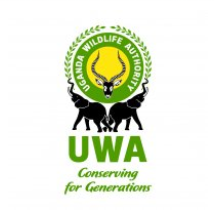Get an overview about the four safari regions of Uganda which include the western, northern, eastern and central regions. These are further separated into 15 sub-regions: Kigezi, Ankole, Rwenzori (Greater Toro), and Bunyoro in the west; Elgon, Teso, and Karamoja in the east; and Acholi, Lango, West Nile, and Lango in the north.
Knowing about them should help you to decide where to go for safari. If this is your first trip to Uganda, have a look at our Uganda travel advice.

Central Uganda
Central region stretches from the northern part of Lake Victoria to the shores of Lake Kyoga. It was once the autonomous territory of the Kabaaka of Buganda kingdom, however. The region now is divided into 24 districts. The major cities in central region include Entebbe town and Kampala, which serve as bases to start or end your Uganda safari.
Western Region

The Western region, also referred to as the classic wildlife circuit takes advantage of Uganda’s relatively small size compared to Kenya or Tanzania, enabling visitors to visit and sample a variety of places and experiences with less travel or expense. This part of Uganda offers 8 of the 10 national parks including the UNESCO heritage sites of Bwindi and Rwenzori, Murchison falls, Kibale, Queen Elizabeth, Semliki, Mgahinga gorilla, and Lake Mburo. Other destinations can be added depending on the amount of time you wish to spend. For instance, Toro-Semliki wildlife, Lake ALbert, Lake Bunyonyi, and Echuya forest are great options for birding. The main route includes a typical Uganda gorilla tours, chimpanzees and golden monkey treks and wildlife viewing in the savanna parks. Ziwa Rhino Sanctuary is a must-visit being the only place to see rhinos in Uganda.
The Ankole long horn cattle are considered special cultural attraction of the region. Those intending to see them and learn about the associated cultural and traditions can visit the Nshenyi village in Ntungamo. Also around Lake Mburo national park.
Northern Uganda
The north east corner of Uganda is semi-arid wilderness known as Karamoja. It is situated along the border with South Sudan and to the east the Turkana county in the rift valley province of Kenya. The area is quite remote from the rest of Uganda.
Travel Tip to experience the “Rural Africa.”
There are several groups but the most powerful are the Karamojong. They’re semi-nomadic Nilotes in nature and resemble the Masai in several ways including high jump dance. Some of their traditions attempt to resist modern influence such as living in Manyattas, which look like enclosed cattle Kraals. Land is communally owned, although 53% of it belongs to conservation areas. The amount of land they own might be steadily decreasing with recent discovery of gold, however.

Cattle and farming is still tradition
The investment profile and alternative sources of income are at hand for every family to seize opportunity. Even among the Ik (smallest ethnic group in Uganda), the tradition of survival by hunting and gathering is turning around. People are being encouraged to do sustainable farming through the Karamoja Intergrated Development Plan (KIDP). The government of Uganda is establishing over 20 valley dams that are to create enough water for cattle and empower people to control food insecurity and adopt to persistent drought. Besides, cattle may still be the greatest measure of wealth. It is no longer a big threat to security and poaching giraffes for their tails has almost ceased.
Travelers will get to know the Karamoja indigenous ethnic groups of people of Karamoja through a variety of tours including gold mining family tour. It is available through the Kara Tunga Tours with the Karamoja breakfast. There are opportunities to join biking trips across the border to appreciate the flat landscape scenery and cultural similarities.
From hiking in Mount Moroto and Pian Upe Wildlife Reserve to cultural and nature walks in the Narus valley Kidepo Valley National Park. These destinations have empty nature trails even during peak season as most visitors head to the west for gorilla trekking.
In Kidepo or Pian Upe, you have access to unspoiled nature where you’re likely to spot rare wild animals such as cheetahs, roan antelopes and Ostriches, Aard wolf, Bat eared fox and Caracol. Lions, leopards, elephants, buffaloes, impalas, zebras, giraffes, Uganda kob, and water bucks are frequently seen especially in Kidepo.
Eastern Uganda
Looking for a Ugandan coffee tour, waterfalls, and mountain climbing, look no further than the eastern region.
The way to the east from Kampala is to drive through Mabira forest reserve and Jinja city at the source of Nile River. You can make stops along the way for adventure activities such as Zipline, birding, white water rafting, tubing, Busowoko falls massage and boat cruise.

Going further you’ll reach Mbale city “the Coffee Capital of Uganda” at the base of Mt. Elgon. The huge extinct volcano marks Uganda-Kenya borderlands. It’s summit Wagagai 4,123 m above sea level is reachable from Kapchwai a few kilometers north of Mbale.



